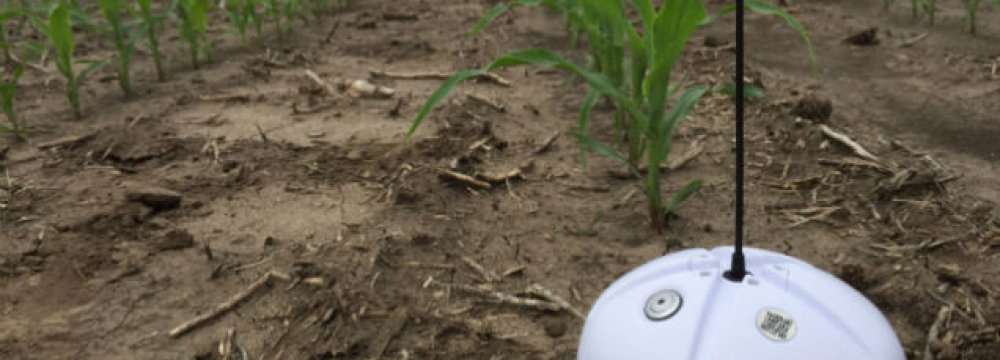As water levels in California drop to an all-time low, agriculture analytics startup CropX has developed a solution to help farmers optimize irrigation while keeping water usage to a minimum.
CropX uses a combination of three wireless sensors and a mobile app, which founder Isaac Bentwich calls the “Internet of Soil,” to determine exactly how much water needs to be applied to each part of the field, TechCrunch reported.
“At the moment, there’s a huge, glaring omission within the whole of agriculture — virtually all agriculture systems irrigate land uniformly. Even the most advanced technology always treats land as though it was uniform,” says Bentwich.
In a square-mile field, soil quality can vary widely, Bentwich explains. To solve this problem, CropX does a one-time analysis of each field, using publicly available data about the soil type and topography, and divides the land into irrigation zones.
CropX ships farmers three sensors, and the mobile app shows precisely where in the field to place them. The sensors, which are battery powered and last up to four years, send soil data to the cloud, and the app calculates the amount of water necessary to produce the maximum yield in each irrigation zone.
It is currently being used to power irrigation in 5,000 acres across a small number of farms in Missouri, Colorado and Kansas. With $9 million in Series A funding led by Finistere Ventures, Innovation Endeavors and GreenSoil Investments, they will be expanding their reach across the US.
According to Bentwich, farmers using CropX have reported water and energy savings of up to 25 percent. They’re also able to prevent over-watering, which not only damages crops but can cause chemical run-off that is damaging to the surrounding environment.
Crop yield enhancement is a $2.5 trillion market, but according to the US Department of Agriculture, 90 percent of farmers currently do not use anything to optimize irrigation.
“Agriculture has undergone three major revolutions in the past 150 years, and each one assumed that water was limitless — water was always used to grow more out of every acre,” Bentwich says.
“Now, water has literally run out. So if we are able to generate a low single-digit improvement with crop yield for a single crop, that’s a billion dollar company right there.”
To produce 70 percent more food by 2050 to support a rapidly growing population, technology like the one CropX is developing will likely be our best bet.





